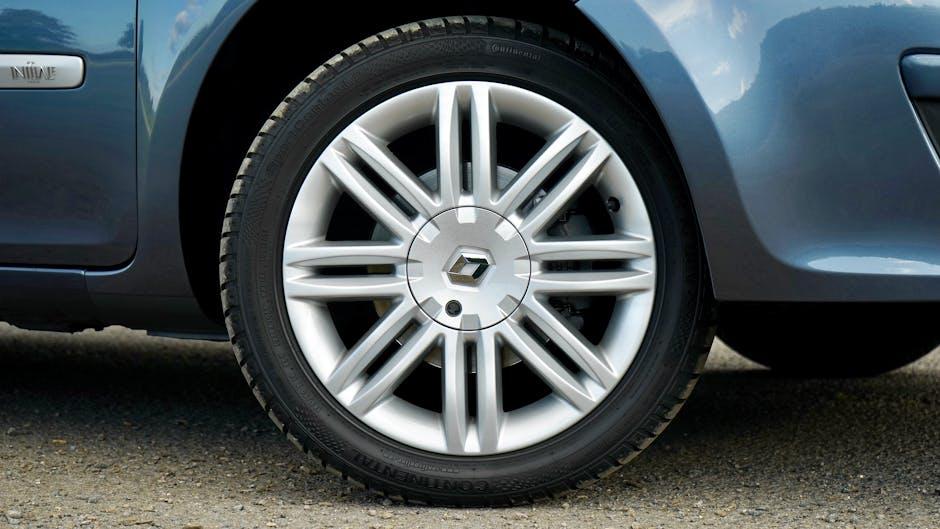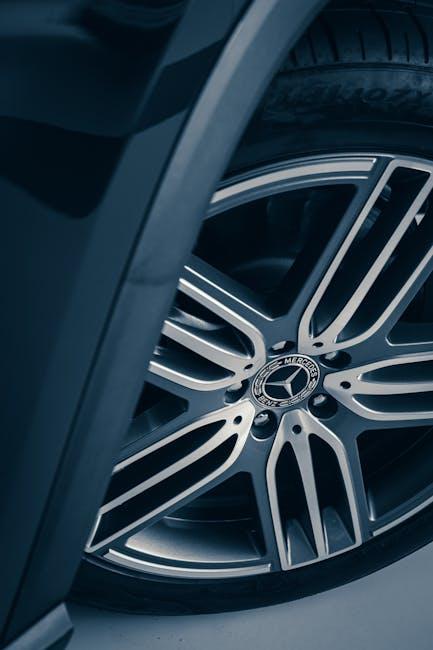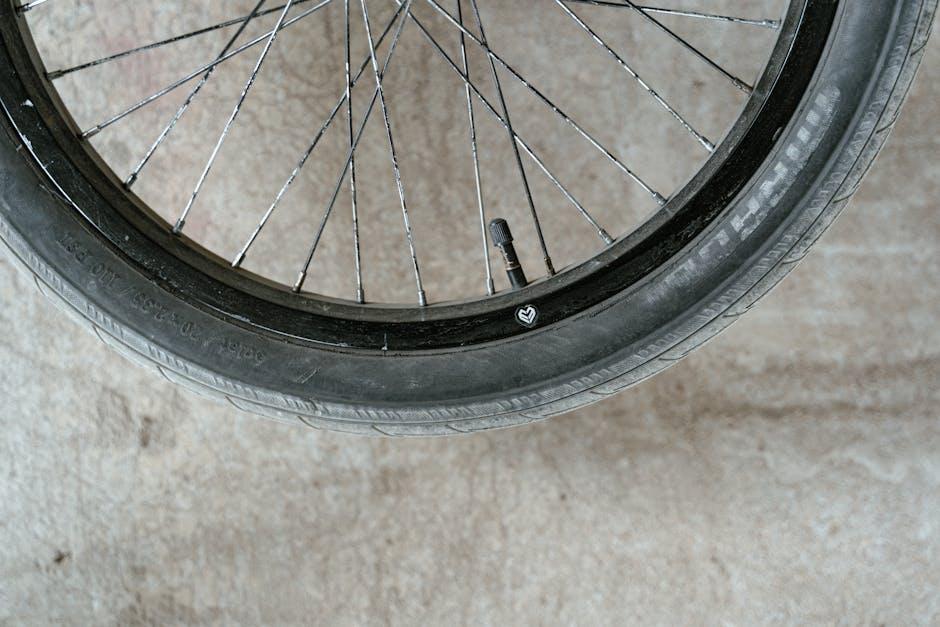Every journey your car embarks on, from the daily commute to weekend getaways, subtly shapes the wear and tear on its tires. While often overlooked in routine maintenance, tire rotation plays a crucial role in extending the life of your tires, enhancing safety, and ensuring a smoother ride. But when exactly is the right time to rotate your car’s tires? Delving into the nuances of tire wear patterns and manufacturer recommendations, this article explores the essential timing and techniques for tire rotation to keep your vehicle performing at its best.
Table of Contents
- Understanding the Importance of Tire Rotation for Vehicle Safety
- Signs Your Tires Are Ready for Rotation
- How Driving Habits Influence Tire Wear Patterns
- Choosing the Right Rotation Pattern for Your Vehicle
- Timing Your Tire Rotation Based on Mileage and Weather Conditions
- Expert Tips for Maintaining Even Tire Wear and Extending Tire Life
- Q&A
- In Summary

Understanding the Importance of Tire Rotation for Vehicle Safety
Regular tire rotation is a key practice to ensure your vehicle’s safety and extend the life of your tires. When tires wear unevenly, it can lead to compromised traction, less efficient braking, and even premature tire failure. By swapping the tires from one position to another, you help distribute wear more evenly, maintaining better road grip and improving control—especially in wet or slippery conditions. This not only enhances your driving experience but also reduces the risk of accidents caused by unexpected tire issues.
Many experts recommend rotating your tires every 5,000 to 7,500 miles, but this interval can vary depending on your driving habits and the type of vehicle you own. Here are some tips to know when it’s time to rotate your tires:
- Loud vibrations or noise while driving can indicate uneven tire wear.
- Visible tread wear differences between front and rear tires.
- Manufacturer recommendations listed in your vehicle’s owner manual.
| Vehicle Type | Recommended Rotation Interval | Rotation Pattern |
|---|---|---|
| Sedan / Compact | 5,000 – 7,500 miles | Front to Rear Swap |
| SUV / Truck | 6,000 – 8,000 miles | X-Pattern Rotation |
| Performance Cars | 3,000 – 5,000 miles | Front to Rear & Cross |

Signs Your Tires Are Ready for Rotation
Uneven tread wear is one of the most obvious indicators that your tires are due for a rotation. If you notice that the tread on one tire is significantly more worn down than the others, it disrupts the balance and traction your vehicle requires to perform optimally. Additionally, if your car starts to pull to one side while driving on a straight road, or if you feel unusual vibrations in the steering wheel, these symptoms point toward uneven wear and tire misalignment, both of which can be addressed by timely rotation.
Keep an eye out for other subtle signs as well, such as:
- Visible cupping or scalloping on the tire surface, causing a bumpy ride.
- Braking and handling feel different, especially if you notice decreased grip or longer stopping distances.
- High mileage intervals, since many manufacturers recommend rotating every 5,000 to 7,500 miles.
| Wear Pattern | What It Means |
|---|---|
| Outer Edge Wear | Underinflation or sharp cornering |
| Inner Edge Wear | Improper alignment |
| Center Tread Wear | Overinflation |

How Driving Habits Influence Tire Wear Patterns
Every turn of the wheel reveals a story about how you drive, and your tires wear the tale on their tread. Aggressive acceleration and abrupt braking cause uneven wear, primarily on the front tires if you have a front-wheel-drive vehicle. Conversely, gentle driving habits promote even tread wear, extending your tire’s life and maintaining smoother handling. Sharp cornering adds additional strain on the outer edges, which can prematurely wear down certain sections, demanding earlier rotation than routine. Simply put, your driving rhythm directly sculpts the longevity and performance of your tires.
Consider these common habits that accelerate tire wear:
- Rapid accelerations intensify wear on the drive tires.
- Frequent hard braking can cause flat spots or skid marks.
- Consistent high-speed cornering grinds down tread edges quickly.
- Improper tire pressure amplifies uneven wear patterns.
| Driving Habit | Common Wear Pattern | Recommended Rotation Frequency |
|---|---|---|
| Aggressive Acceleration | Front tire wear, tread thinning | Every 5,000 miles |
| Hard Braking | Flat spots, uneven tread | Every 4,000 miles |
| High-Speed Cornering | Outer edge wear | Every 6,000 miles |
| Normal Driving | Even wear | Every 7,500 miles |

Choosing the Right Rotation Pattern for Your Vehicle
Selecting the ideal tire rotation pattern depends largely on your vehicle’s drivetrain and tire type. For front-wheel drive cars, the “forward cross” pattern is often recommended, where the front tires move straight back, and the rear tires cross to the front. Rear-wheel drive vehicles, on the other hand, benefit from the “rearward cross”, which similarly ensures even tire wear by swapping the rear tires straight forward and crossing the front tires to the back. If your car has four-wheel drive or all-wheel drive, the “X pattern” is usually most effective, promoting uniform tread wear across all four tires.
Understanding the type of tires you have also influences rotation choices. Directional tires, designed to perform optimally when rolling in a specific direction, generally require a front-to-back rotation without crossing sides to maintain their integrity. Conversely, non-directional tires afford greater flexibility, allowing for multiple rotation methods. Keeping this in mind, here’s a quick overview of rotation patterns suited to different drivetrains and tire types:
| Drivetrain | Recommended Pattern | Tire Type | Extra Notes |
|---|---|---|---|
| Front-Wheel Drive | Forward Cross | Non-directional | Promotes even wear on drive tires |
| Rear-Wheel Drive | Rearward Cross | Non-directional | Balances wear between front and rear |
| All-Wheel Drive | X Pattern | Non-directional | Ensures uniform tread wear all around |
| Any | Front to Back | Directional | Maintains tire direction and performance |

Timing Your Tire Rotation Based on Mileage and Weather Conditions
Understanding the optimal intervals for rotating your tires can save you money and enhance vehicle safety. A general rule of thumb is to rotate tires every 5,000 to 7,500 miles, but this can shift depending on driving habits and environmental factors. For instance, if your vehicle is exposed to harsh weather or driving on uneven terrain frequently, you may want to rotate your tires closer to the 5,000-mile mark to counteract uneven wear. Conversely, smoother roads and mild climates might allow for longer intervals before the next rotation.
Weather conditions play a crucial role in tire longevity as well. Extreme heat tends to harden the rubber, accelerating tread wear, while colder temperatures can make tires contract and stiffen. For those living in areas with seasonal changes, such as heavy snow or riding during rainy seasons, it’s wise to rotate tires before the change in weather hits. This keeps the tire treads balanced and ready for optimal grip. Consider this quick reference table:
| Mileage Interval | Weather Condition | Recommended Action |
|---|---|---|
| 5,000 miles | Hot, dry climates | Rotate at lower mileage to prevent premature wear |
| 6,000-7,500 miles | Mild weather | Standard rotation interval |
| Before seasonal change | Winter or rainy seasons | Rotate tires to ensure tread performance |

Expert Tips for Maintaining Even Tire Wear and Extending Tire Life
To keep your tires wearing evenly and lasting longer, it’s essential to adopt a proactive maintenance routine. Regular tire inspections can reveal early signs of uneven tread wear, such as feathering or cupping, which often indicate misalignment or suspension issues that need attention. Ensure your tires are inflated to the manufacturer’s recommended pressure, as underinflation or overinflation drastically affects tread wear patterns and fuel efficiency. Additionally, rotating your tires at consistent intervals redistributes wear patterns, helping avoid premature replacement and improving ride comfort.
Here are some expert tips to help you maximize tire life:
- Rotate tires every 5,000 to 8,000 miles or as specified in your owner’s manual
- Check wheel alignment annually or when handling feels off
- Balance tires to prevent vibration and uneven wear
- Inspect tread depth regularly and replace tires when below 2/32 inches
| Maintenance Task | Recommended Frequency | Benefit |
|---|---|---|
| Tire Rotation | Every 6,000 miles | Uniform wear & extended tire life |
| Wheel Alignment | Every 12 months | Improved handling & prevents uneven wear |
| Tire Balancing | At every rotation | Reduces vibration & tire damage |
| Tread Depth Check | Monthly | Ensures safety & optimal traction |
Q&A
Q: Why is tire rotation important for my car?
A: Tire rotation helps ensure even tire wear by periodically changing the position of each tire. This extends the life of your tires, improves gas mileage, and enhances overall vehicle performance and safety.
Q: How often should I rotate my car’s tires?
A: Most manufacturers recommend rotating tires every 5,000 to 7,500 miles. However, it’s best to check your car’s owner manual for specific guidance tailored to your vehicle.
Q: Can I rotate my tires myself, or should I visit a professional?
A: If you have the right tools and experience, you can rotate your tires at home. Otherwise, a professional service ensures the job is done correctly, especially with modern vehicles that may have specialized tires or alignment considerations.
Q: What are the common tire rotation patterns?
A: The most common patterns include the forward cross, rearward cross, and X-pattern. The right pattern depends on whether your car is front-wheel drive, rear-wheel drive, or all-wheel drive, as well as the type of tires you have.
Q: How will I know if it’s time to rotate my tires?
A: Uneven tread wear, vibrations while driving, or noticeable handling changes can indicate it’s time to rotate. Regular mileage checks are the best proactive measure to keep tire rotation on schedule.
Q: Can rotating my tires really improve fuel efficiency?
A: Yes! Even tire wear reduces rolling resistance, allowing your car to move more smoothly and use less fuel, which adds up to savings over time.
Q: What happens if I don’t rotate my tires?
A: Tires may wear unevenly, leading to decreased traction, reduced lifespan, a rougher ride, and potentially unsafe driving conditions.
Q: Are there any special considerations for winter or summer tires?
A: Seasonal tires often have different tread patterns and wear characteristics. Rotating them according to the manufacturer’s suggestions helps maintain optimal grip and prolongs tire life during their respective seasons.
Q: Is tire rotation necessary for all vehicles, including performance and electric cars?
A: Yes, all vehicles benefit from tire rotation. Performance and electric cars might have specific recommendations due to differences in weight distribution or tire types, so always check your vehicle’s manual.
Q: How does tire rotation relate to vehicle alignment and balancing?
A: Tire rotation complements alignment and balancing by promoting even wear. Misalignment or imbalance can accelerate tire wear, so it’s wise to inspect and address these issues alongside rotation for the best results.
In Summary
In the journey of vehicle maintenance, knowing when to rotate your car’s tires is like mastering a subtle rhythm that keeps your ride smooth and steady. By paying attention to mileage, tire wear patterns, and your driving habits, you can extend the life of your tires and enhance safety on every road. So, take a moment to tune into your car’s needs—because a well-timed rotation isn’t just a mechanical task, but a key step in ensuring your vehicle’s performance dances gracefully through every mile. Keep your wheels turning wisely, and the road ahead will thank you.

